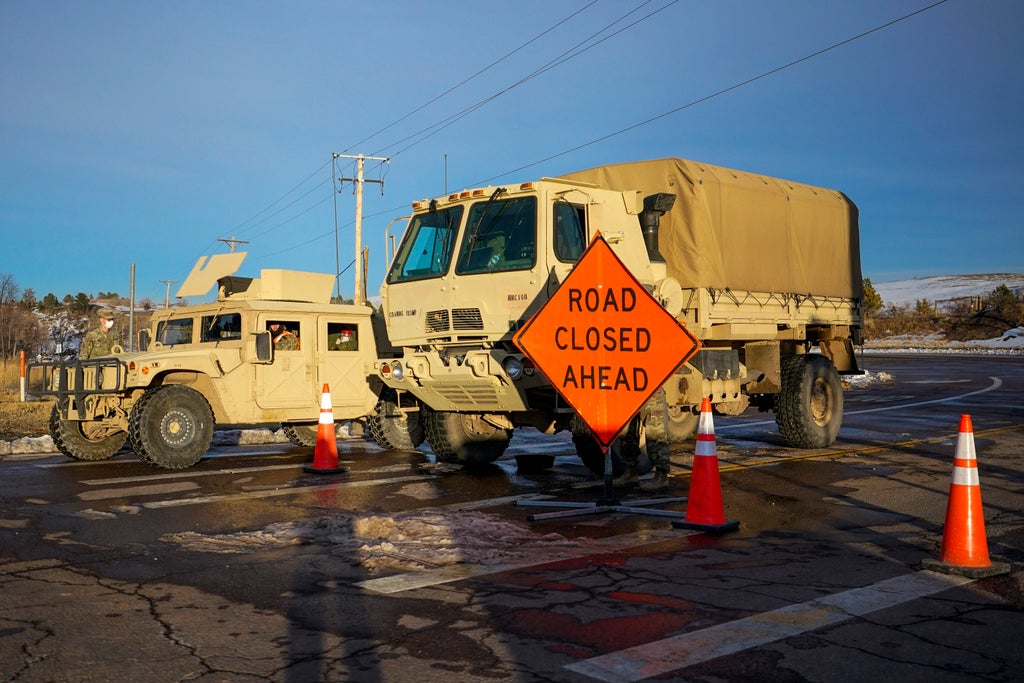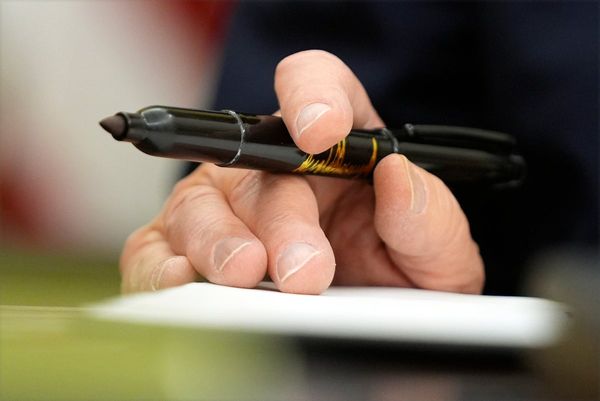
A late-season wildfire pushed by hurricane-force winds tore through two densely populated Denver suburbs and seemed destined to leave a trail of deaths. Yet, only two people are unaccounted for out of some 35,000 forced from their homes.
It’s a remarkably low number of possible casualties, according to disaster experts and authorities, all the more so because a public alert system did not reach everyone and the wintertime blaze caught many people off-guard.
Several factors broke in favor of the evacuees: The blaze came during daylight and over the holidays when many were at home, in mostly affluent neighborhoods where most people have easy access to vehicles. It also might have helped that the area has seasoned emergency management personnel who have worked other recent wildfires, major floods in 2013 and a supermarket mass shooting last March.
“In terms of the big picture it’s a really miraculous evacuation,“ said Thomas Cova, a University of Utah professor who researches emergency management and wildfire evacuations. “So close to a populated areas ... spot fires everywhere and 100-mile-per-hour winds — I think it’s incredible that’s there’s only two people missing.”
Colorado Gov. Jared Polis said the fire that destroyed almost 1,000 homes and damaged hundreds more stands as a warning: “When you get a pre-evac or evacuation notice, hop to it.”
Officials have not said exactly how many people were contacted through the emergency system, which sends a recorded alert or text to phones. The alert undoubtedly saved lives, but some residents affected by the fire complained in the aftermath that they never received it.
Neil Noble, who fled his Louisville home Thursday, said the first he heard of the fire was from a FedEx delivery driver who knocked on his door to drop off a package. After setting out for an errand and seeing gridlocked traffic as the smoke plume grew, he decided to leave with his three teenage children.
“I’ve talked to dozens of people, even those whose houses burned down, and nobody seems to have received any kind of notification,” he said.
Alerts went out to people with landlines because their numbers are automatically enrolled in the system and those with cellphones and VoIP phones who enrolled online, Boulder County Sheriff Joe Pelle said. He also noted that people with landlines might not have received the evacuation order because those very lines had been burned by the fire.
According to Everbridge, the company that created the notification system, more than half of households in the country rely entirely on cellphones and don’t have landlines.
Noble, who does not have a landline and didn't know he had to sign up for the alerts on his cellphone, said it would be an uphill battle to get tens of thousands of people to manually sign up for the service, causing unnecessary risk.
“We were fortunate enough it happened in the daytime, you know. You could see the plume getting worse and worse," he said. "At night this would have been deadly with this lack of communication.”
Past fires have shown that wildfire alert system subscription rates can be as low as 30% to 40%, Cova said. But not every household needs to receive an emergency alert for it to be effective, since people will quickly share the news with their neighbors and friends, he said.
The Boulder County fire ignited shortly after 11 a.m. on Dec. 30, when schools were closed and many people were either home from work or working from home due to the pandemic. That avoided a scenario in which anxious parents scrambled to find their children rather than flee immediately, said Lori Peek, director of the Natural Hazards Center at the University of Colorado Boulder.
Most people in the suburban neighborhoods that burned likely had access to a vehicle, a contrast with other disasters such as Hurricane Katrina, where a quarter of New Orleans’ population had no personal transportation, said Peek, who lives and works just miles from the burned area.
And while the emergency notification system didn’t reach everyone, Boulder-area residents have seen enough fires along the Front Range communities at the foot of the Rocky Mountains to react quickly when smoke appears on the horizon, she said. Sharpening that awareness of danger is a growing understanding that climate change is making wildfires worse even as subdivisions creep deeper into fire-prone areas.
“I think one of the shifts that is going to follow this fire is that people are going to start thinking, ‘Am I at risk? I thought I was safe, living in a suburban area,’” she said. “I don’t think it’s a bad thing to question that. Anything that can help people to get more prepared for the hazards we face is a good thing.”
Cova credited local officials for not hesitating to order evacuations once the fire began to spread.
“If we had evacuation speed records, this would be up there in the top 10,” he said. “I don’t think anybody dropped the ball.”
He contrasted the Colorado response with California’s 2018 Camp Fire that killed 85 people and destroyed the town of Paradise. The evacuation order for Paradise came after the fire already was in town and there was only one remaining route out of the community.
Boulder County Commissioner Matt Jones, who was forced from his Louisville home, credited all of the law enforcement agencies and fire departments that converged on the area from across the state to help with the evacuation.
“It was phenomenal. It saved homes. I have no doubt about it,” he said.
But he also pointed to an important factor that can’t be quantified — common decency.
“There are a couple of things I realized when I was driving away from our home,” he said. “One was the patience and grace of all the people getting evacuated. People were kind, polite, letting people in because they were all getting out. And that’s part of the reason I think so many people did well getting out.”







